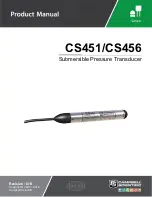
- 9 -
microphone two inches from your mouth and speak clearly in a normal voice. The radio comes
complete with a low impedance (500 ohm) dynamic microphone.
2.3 OPERATION
2.3.1 PROCEDURE TO RECEIVE
1. Be sure that the power source, microphone and antenna are connected to the proper connectors
before going to the next step.
2. Press the
POWER
switch to apply power to the radio.
3. Set the
VOL
to a comfortable listening level.
4. Set the
MODE
switch to the desired mode.
5. Listen to the background noise from the speaker. Turn the
SQUELCH
knob slowly clockwise until
the noise just disappears. The
SQUELCH
is now properly adjusted. The receiver will remain quiet
until a signal is actually received. Do not advance the control too far or some of weaker signals will
not be heard.
6. Set the
CHANNEL
selector switch to the desired channel.
7. Set the
RF GAIN
control fully clockwise for maximum RF gain.
8. Adjust the
CLARIFIER
control to clarify the SSB signals or to optimize AM signals.
2.3.2 PROCEDURE TO TRANSMIT
1. Select the desired channel of transmission
2. Set the
MIC GAIN
control fully clockwise.
3. If the channel is clear, depress the push-to-talk switch on the microphone and speak in a normal
voice.
2.4 ALTERNATE MICROPHONES AND INSTALLATION
For best results, the user should select a low impedance dynamic type microphone or a transistorized
microphone. Transistorized type microphones have a low output impedance characteristic. The
microphones must be provided with a four-lead cable. The audio conductor and its shielded lead
Summary of Contents for DX 2547
Page 12: ...12...
Page 13: ...13...
Page 17: ...17 Figure 4 1 Transmitter test setup Figure 4 2 Receiver test setup...
Page 20: ...20...
Page 23: ...23 PART LIST...
Page 27: ...27...
Page 31: ...31...
Page 39: ...39 DX 2547 MAIN PCB...










































